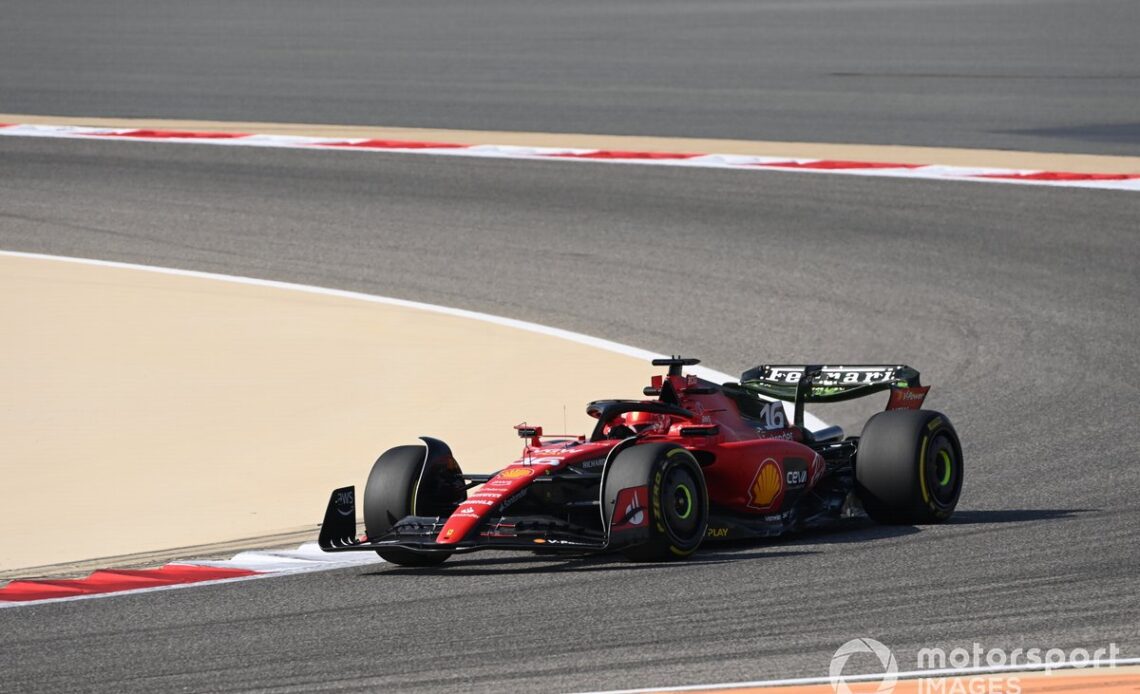The new design, which is intended to clean up the airflow to the wing, triggered a DRS issue when it was trialled on the final day of testing.
When it was tried again in the Friday FP1 session, TV coverage showed it oscillating in dramatic fashion, and it was quickly replaced with a standard twin-pylon wing for the remainder of the weekend.
Veteran Ferrari engineer Jock Clear, who currently serves as Charles Leclerc’s driver coach, says the problems were a simple reflection of the lack of track testing available to teams.
“I think the double-pylon obviously is a carryover from last year, tried and trusted,” he said. “And the single didn’t really come into development until later in the year, in fact very late in the year, maybe the last month of development.
“So it’s fairly young. It’s a development that’s just a step forward on the rear wing really. Obviously getting down to a mono pillar just cleans up the flow to the bottom of the main plane.
“So it’s just providing a bit more juice. But like everything, we need to get it on the car and check it all out. And we did that at the test, and we did it again here, and it’s just an ongoing development really.
“So nothing amazing about it. But it’s probably something that we want to pursue, what we’ve seen so far is positive. So it’ll probably appear again.”
Charles Leclerc, Ferrari SF-23
Photo by: Mark Sutton / Motorsport Images
Clear says it’s impossible to judge how much work will be required for the team to be in a position to actually commit to using it on a race weekend.
“Difficult to say, I would have to refer to my composite colleagues and aero specialists to know exactly,” he noted. “But it’s one of those things where actually it’s very difficult to get that sort of mode of vibration replicated in the wind tunnel.
“You can get the loads out of it, but all the stiffnesses actually have to be reflected in the real size. So that’s why we’ve had to go to the car, we put it on the car.
“And of course, nowadays, you get very little testing time. So we have to use these Fridays to test some bits. So as I say, it’s just a normal development. And we’ve learned a lot from it. And we’ve got the videos, we’ve got the sensors on it, it will tell us how much movement there is now.
“It’s obviously improved from last week to this week. And we’ll go back to the factory and improve it again. And once we’re comfortable with it, it’ll appear.”
Ferrari also…
Click Here to Read the Full Original Article at Motorsport.com – Formula 1 – Stories…

